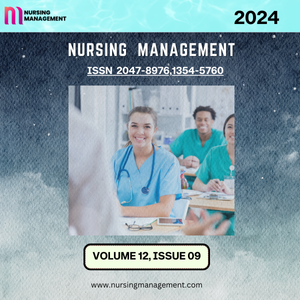Menu
Volume 11 Issue 5
Professional Nurses’ Experiences of Student Nurses’ Absenteeism during Psychiatric Clinical Placement in Limpopo Province, South Africa: A Qualitative Study
Thingahangwi C. Masutha,Mary Maluleke,Ndidzulafhi S. Raliphaswa,Mphedziseni E. Rangwaneni,Takalani E. Thabathi,Ndivhaleni R. Lavhelani andDuppy Manyuma
1Department of Pathology, Hospital Nacional Docente Madre Niño San Bartolomé, Lima 51001, Peru
2Facultad de Ciencias de la Salud, Universida Privada del Norte, Lima 51001, Peru
3School of Nursing, Faculties of Health Science, Universidad Norbert Wiener, Lima 51001, Peru
4Nursing Deparment, Hospital Nacional Dos de Mayo, Lima 51001, Peru
5School of Medical Technologist, Faculties of Health Science, Universidad Tecnológica del Perú, Lima 51001, Peru
6Qualitative Unite, Nesh Hubbs, Lima 51001, Peru
7South American Center for Research in Education and Public Health, Universidad Norbert Wiener, Lima 51001, Peru
Author to whom correspondence should be addressed.
Abstract
Background: Burnout Syndrome (BS) is a work fatigue phenomenon that leads to physical exhaustion during care work, and there could be an increase in the proportion of nurses affected during the COVID-19 pandemic, especially in those caring for infected patients. We aimed to determine BS in nurses during the COVID-19 pandemic. Methods: An observational study was conducted on 100 nurses over the age of 18 and working in COVID-19 medical units in 2021. The 22-item Maslach Burnout Inventory questionnaire was used to estimate BS, and differences between age groups, gender, work time, and previous infection were estimated. Results: The majority of nurses (mean 30 ± 5.5 years) were women (78%), and the most frequent working time was from 1 to 10 years (58%). A total of 88% of the nurses had moderate BS, affecting more males, aged between 20 and 30 years, and without previous infection. The youngest age group, 20–30 years, presented the highest mean BS with 53.8 (SD 4.18) points (95% CI: 52.79 to 54.8), showing differences with older nurses (p < 0.05). Prediction analysis showed that only age was a significant predictor for the development of SB (p < 0.001). Conclusions: BS negatively impacts young nurses during the care of COVID-19 patients, so strategies should be promoted to ensure a better working environment. Improving the workspace can include self-care strategies, changes in the system and work organization, an improvement of interpersonal relationships, and risk prevention.
Keywords: COVID-19; burnout syndrome; nurses; young adult; professional exhaustion; Peru
Editorial Board
Editor-In-Chief
Christopher J. Hayes, University of California, BerkeleyCalifornia
Associate Editors
David P. Williams, Johns Hopkins University
Sophia L. Brooks, University of Sydney
Arjun K. Mehta, University of Cambridge
Isabella S. Johnson, University of Toronto
Eli T. Garcia, University of Oxford
Grace M. Lewis, Stanford University
Mason R. Chen, University of Melbourne

